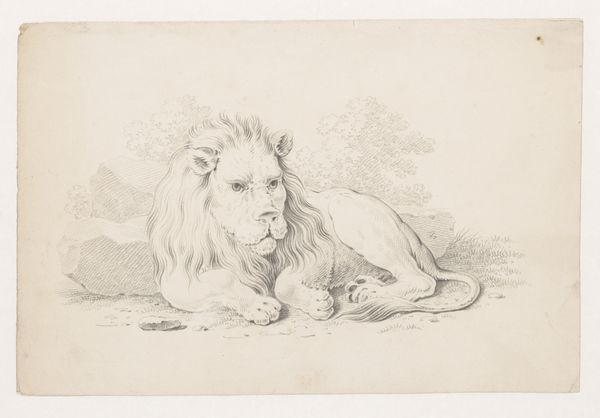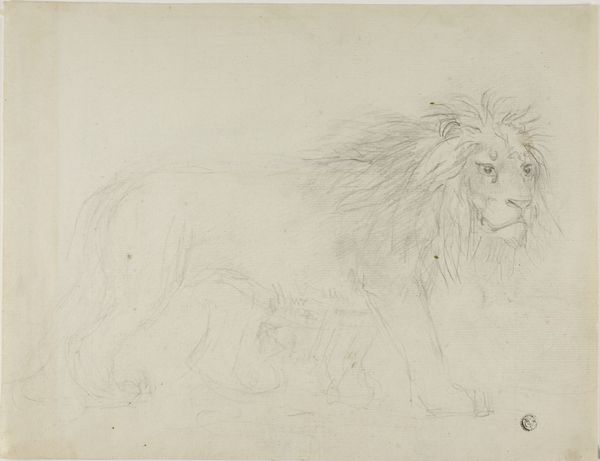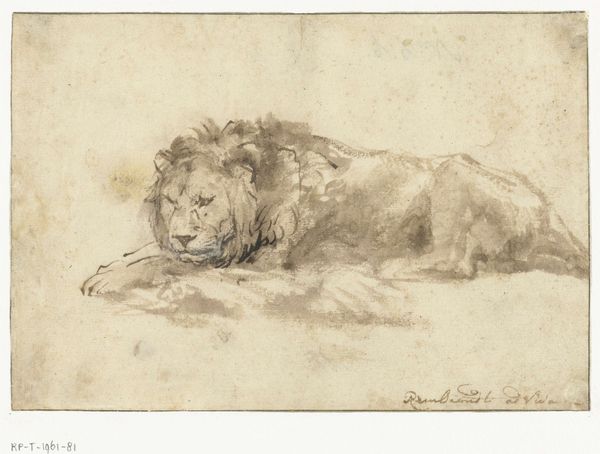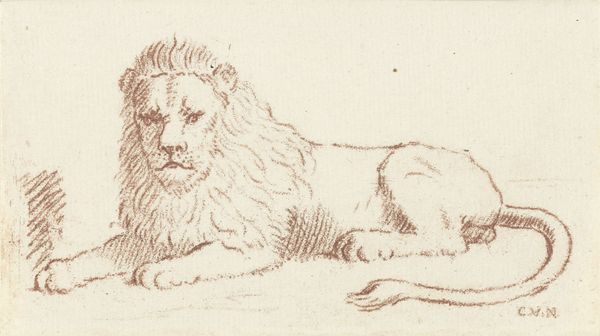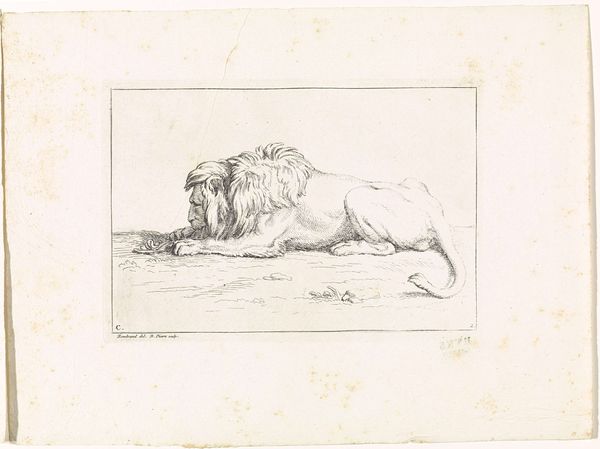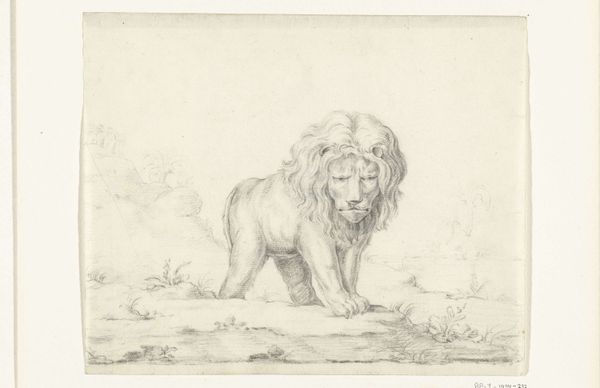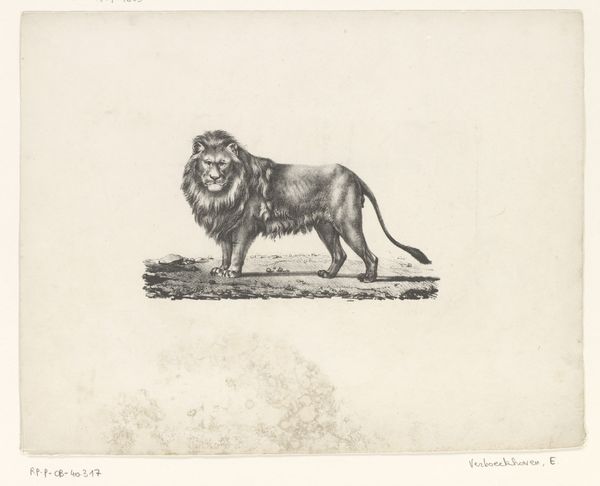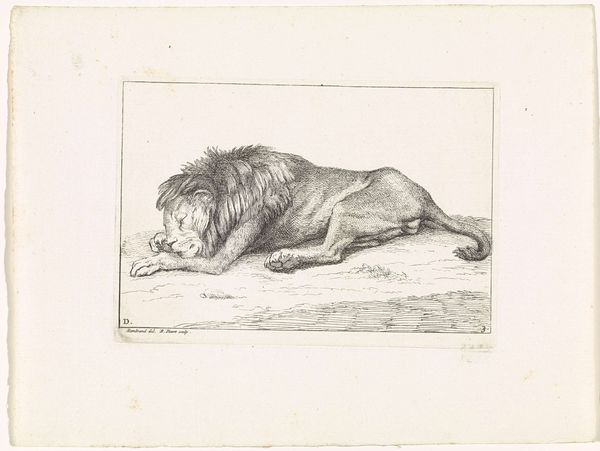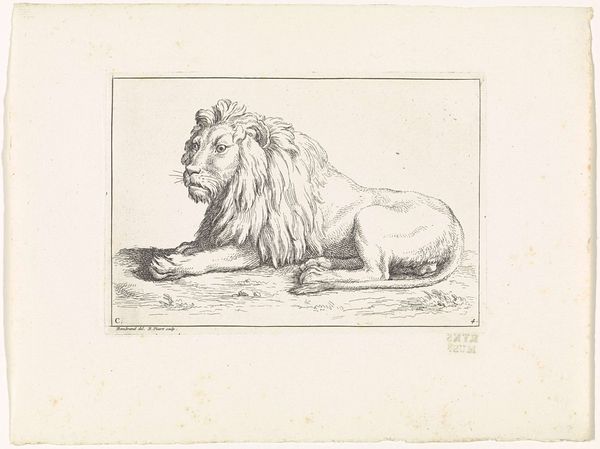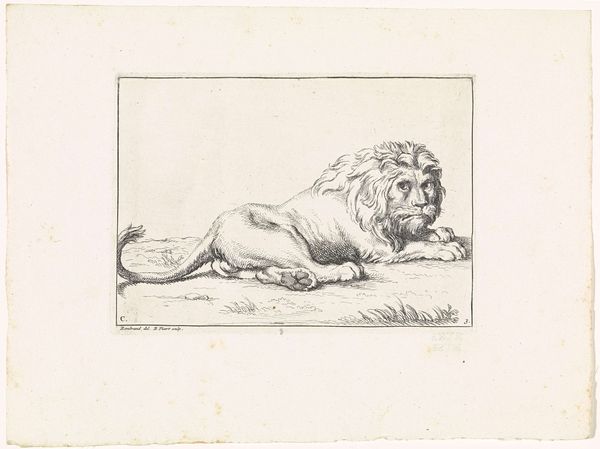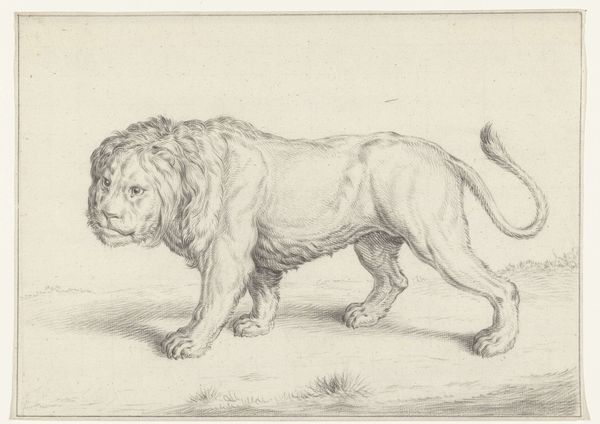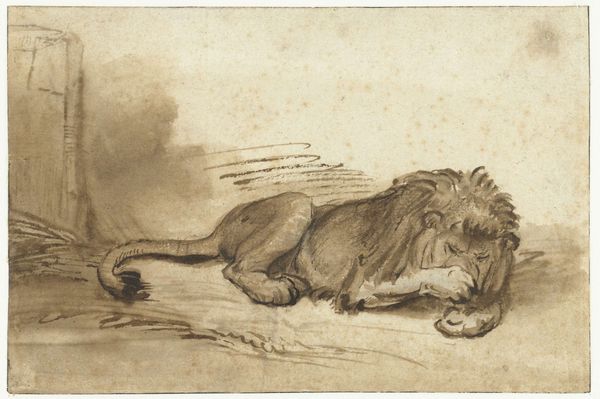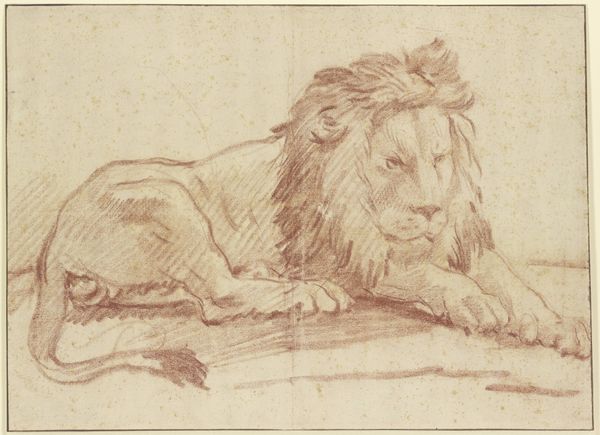
drawing, pencil
#
portrait
#
drawing
#
pencil sketch
#
pencil drawing
#
pencil
#
realism
Dimensions: height 227 mm, width 390 mm
Copyright: Rijks Museum: Open Domain
Editor: We're looking at "Liggende leeuw," or "Reclining Lion," a pencil drawing from 1822 by Jean Bernard, currently held at the Rijksmuseum. It's striking how still and yet powerful the lion appears, even in this simple medium. What stands out to you when you look at this work? Curator: The lion, a potent symbol across cultures, typically embodies courage, strength, and royalty. Yet, here, Bernard presents us with a lion at rest, almost introspective. Do you notice how the details in the face – the lines around the eyes, the slight furrow of the brow – suggest a weight of experience, a world-weariness perhaps? It's as though Bernard captures a moment of reflection for this king of beasts. Editor: I do. It’s interesting to consider how even a symbol so associated with power can be humanized, or perhaps “animalized” in a way that exposes vulnerability. Curator: Precisely. Think about how lions were perceived in the early 19th century, often viewed through a lens of colonial power and exoticism. Bernard’s choice to depict the lion in repose subtly challenges that narrative. He's not presenting a fearsome predator to be conquered, but an individual. Editor: That’s a really interesting point. I hadn't considered the colonial context. Is there anything else that the composition is doing to inform our understanding? Curator: Note the subtle shading, creating texture and volume. It imbues the lion with a palpable presence, further grounding him in reality and away from idealized representations. The detailed mane hints at the lion’s wildness, while the controlled lines of the body suggest a tamed power, a creature existing within a specific space and time, yet retaining its inherent essence. Does that contrast resonate with you? Editor: Definitely. It makes me think about how symbols evolve, carrying different meanings depending on the context and who is viewing them. Curator: Indeed. The artist, the viewer, the culture, all contribute to the ongoing dialogue with the artwork. Understanding the cultural baggage that these symbols carry is important when deciphering art from any period. Editor: This has made me appreciate how much nuance can be packed into even a simple sketch. Thank you. Curator: My pleasure. And remember, the real power of art lies in its ability to continuously provoke questions and challenge our assumptions.
Comments
No comments
Be the first to comment and join the conversation on the ultimate creative platform.
